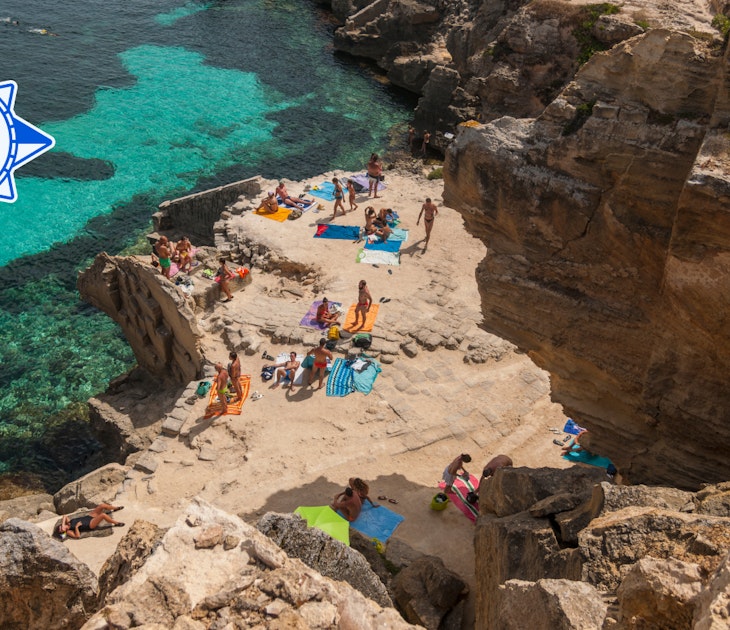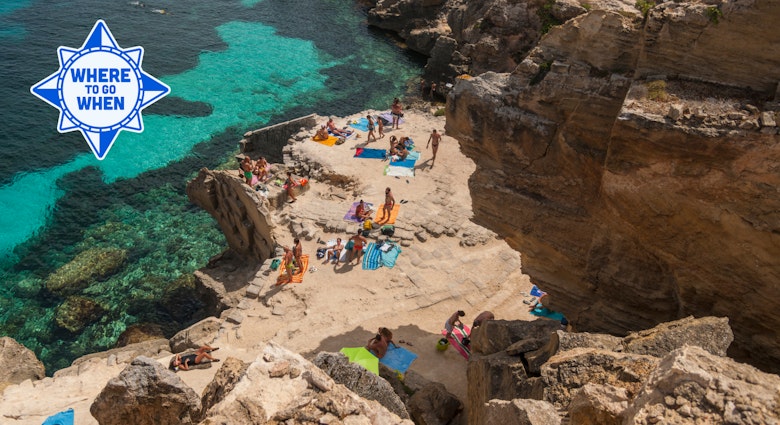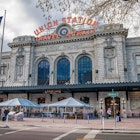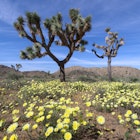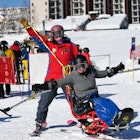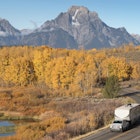Colorado is a large, geographically diverse state that’s best explored by car.
If you’re planning to stay in one place for most of your trip, however, you can easily get around by walking, biking and taking public transit. From Denver, it’s also possible to take buses or fly to other Colorado destinations — and, if you’re not comfortable navigating curvy mountain roads, especially during snow or icy conditions, it’s best to leave the driving to the professionals anyway. The Centennial State also has numerous sightseeing trains that are worth basing a trip around.
As you start planning your next trip, here’s everything you need to know about getting around in Colorado.
Cover a lot of ground while driving
Colorado spans 103,641 square miles, which makes it the 8th-largest state in the nation. It also encompasses many diverse landscapes, from craggy peaks to flat plains to red rock formations. If you’re planning to see multiple different parts of the state during one vacation, then driving is your best bet — whether you road trip from home or fly into Denver International Airport and rent a car.
Two of the major thoroughfares in Colorado are Interstate 25, which runs north and south, and Interstate 70, which runs east and west. Many popular Colorado destinations are accessible via these two well-traveled routes, which means you’ll find plenty of services, restaurants and scenic overlooks along the way. On the flip side, however, because so many drivers use these interstates, they regularly get backed up with traffic in certain spots.
For a more peaceful road trip, consider driving along one of Colorado’s 26 scenic and historic byways (13 of which are also designated as such by the federal government). They can’t take you everywhere within the state, but they can get you pretty close to most destinations — and you’ll see some truly stunning sights and learn something new along the way.
Parking is generally abundant in Colorado, with a few notable exceptions. You may find yourself driving around the block a few times in many downtown Denver neighborhoods, especially on the weekends. However, with enough patience (and a willingness to spend some cash), you’ll eventually be able to find a spot in a garage or lot.
Parking can also be an issue in many mountain towns and at most ski resorts, which are strapped for space because of their rugged surroundings. Most resorts have now added satellite parking lots and free shuttles to bring you right to the chairlift, which can add a little extra time to your ski day. If you’re planning to spend the night, you’ll likely have to pay to park your vehicle at your hotel’s garage (and some only offer valet parking).
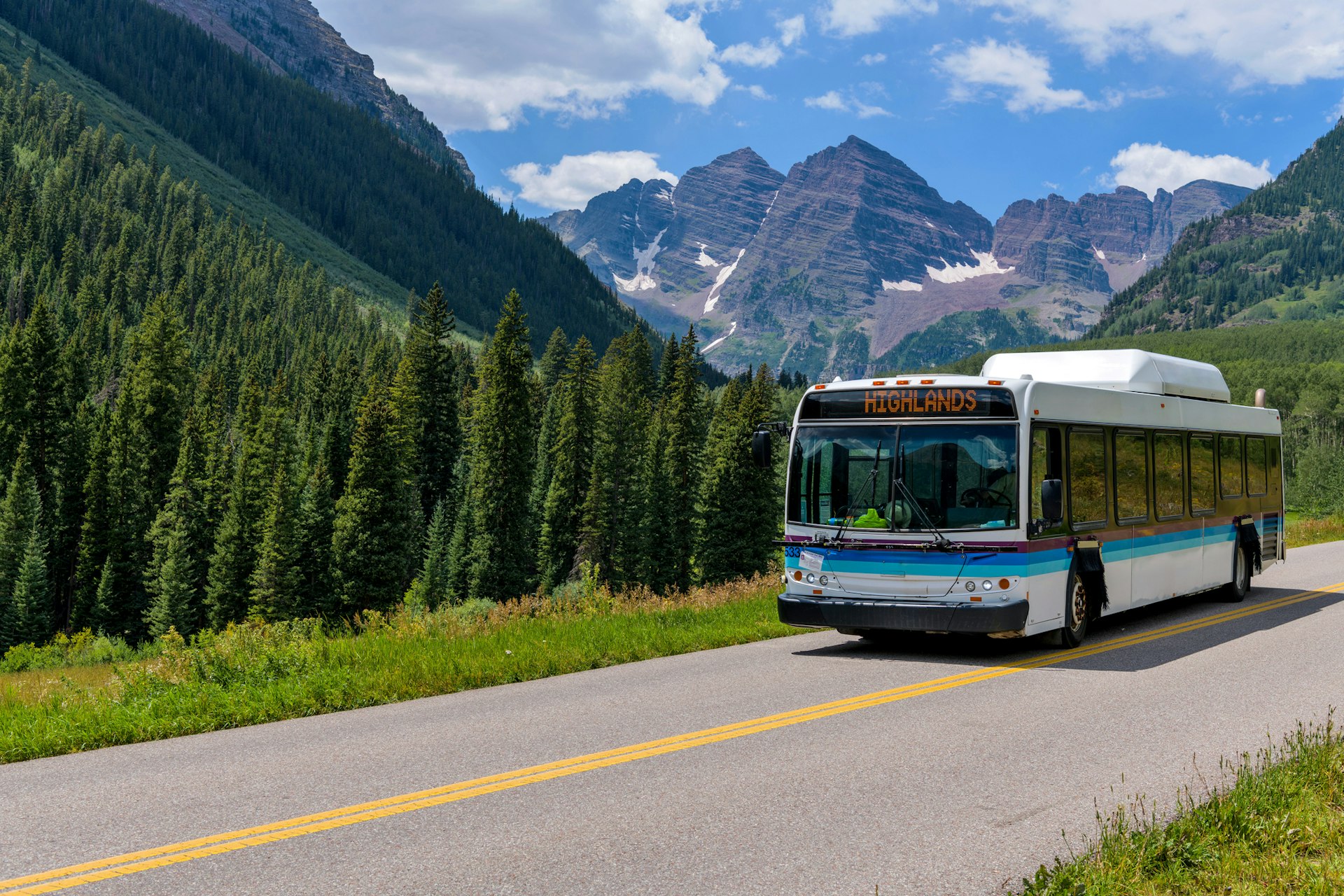
Relax while taking the bus
If you don’t want to pay to rent a car or you’re just not comfortable driving, buses can be a good alternative. In Denver, Regional Transportation District buses (in combination with RTD’s light rail system) can get you pretty much everywhere you want to go.
From Denver, you can also ride the bus to many other destinations around the state. For instance, the Colorado Department of Transportation operates several Bustang routes that connect Denver with Colorado Springs to the south, Fort Collins to the north and Grand Junction to the west. Outside of Denver, CDOT also offers numerous routes between Colorado cities, such as Telluride to Grand Junction and Lamar to Colorado Springs. In the winter, CDOT’s Snowstang buses take skiers and snowboarders to various Colorado ski areas.
Many mountain towns, including Aspen and Vail, also have robust bus systems — and they’re typically free or very affordable. You can often take the bus to popular trailheads, which can quickly fill up with cars. Buses are a great option if you’re unfamiliar with driving in snow or if you’d just prefer the freedom of parking your car at your hotel, then not worrying about it for the rest of your trip. Hotels in many ski towns also have free shuttles for ferrying guests around town.

Engage your senses on foot, bike or scooter
If you want to get around on your own timetable and enjoy unobstructed views of your surroundings, consider walking, biking or riding a scooter. These transportation modes are also perfect for immersing yourself in Colorado’s weather and using more of your senses — when you walk, bike or scooter, you can stop to take photos, smell wildflowers and feel the breeze on your face.
Several Colorado towns have bikeshare programs. These are specifically designed (and priced) for transportation — like going from your hotel to a museum — and not for taking a leisurely, multi-hour jaunt on a bike path. (For that type of ride, you’d want to do a half-day or full-day rental from a local bike shop.) In Denver, you can rent electric bikes (and scooters) through Lyft and Lime. In Aspen, the nonprofit WE-Cycle bikeshare program offers both e-bikes and pedal bikes. And in Vail and the surrounding towns, you can rent e-bikes through a program called Shift Bikes.
If your lodging is in a centrally located spot, you’ll be able to walk to shops, restaurants, bars and some attractions. This is true even in the winter, since many Colorado ski resort villages were designed with pedestrians in mind — some even have heated sidewalks for quickly melting away snow and ice. The state is also home to multiple pedestrian malls, where cars are prohibited, including Boulder’s Pearl Street Mall, Denver’s 16th Street Mall, Aspen’s Pedestrian Mall and Fort Collins’ Old Town Square.
Get around town by hailing a ride
Rideshare platforms like Lyft and Uber operate throughout the state, though you’ll find the highest numbers of drivers in heavily populated areas like Denver, as well as college towns like Boulder and Fort Collins. The same goes for taxi and limousine services. If you try to request a ride in some of Colorado’s more rural and mountainous areas, you likely won’t have much luck.

Marvel at Colorado’s beauty from the rails
Because of its beautiful mountain scenery, Colorado has several sightseeing trains (or hybrid trains that blend transportation with leisure travel).
Amtrak’s California Zephyr train — which connects Chicago with San Francisco — runs right through the heart of the state along an east-west route. If you don’t want to make the entire, multi-day journey, consider picking up the train in Denver, then riding it to Glenwood Springs and back again. It’s about a six-hour trip each way, and Glenwood Springs is ideal for a weekend getaway, thanks to its historic hotels and multiple hot springs pools.
The Canadian rail-tour company Rocky Mountaineer also recently launched a Colorado-focused itinerary that goes between Denver and Moab, Utah, with a stop in Glenwood Springs along the way.
There are some wonderful day trips possible by rail
Even if you’re not planning to ride the train for transportation, Colorado has a wide variety of train day trips that are ideal for incorporating into your vacation itinerary.
In the southwestern corner of the state, the Durango & Silverton Narrow Gauge Railroad offers scenic rail tours between the two towns. The entire excursion — which is particularly stunning in the fall when the aspen change colors — takes about nine hours roundtrip, which includes a two-hour stopover in the remote historic mining town of Silverton.
The Royal Gorge Route Railroad, meanwhile, offers a unique perspective of the Royal Gorge, an impressive, 1200ft-deep crevasse carved out over million years by the Arkansas River in south-central Colorado. The train runs right next to the river at the bottom of the Royal Gorge and, when you look up, you can see the canyon walls towering high above you. You’ll also cross beneath the Royal Gorge Bridge, which dates back to 1929 and is the highest suspension bridge in the nation.
Cross the state quickly by flying
Once you arrive in the state, it’s also possible to fly to get around quickly. For instance, from Denver International Airport, you can fly to Telluride, Cortez, Alamosa, Vail, Aspen, Pueblo, Colorado Springs, Steamboat Springs, Durango, Grand Junction, Gunnison and Montrose. United, Southwest, Southern Airways Express and Denver Air Connection are the primary airlines offering in-state flights.
Accessible transportation in Colorado
Like many states, Colorado as a whole — and its many cities and towns — is working to become even more accessible to travelers with disabilities.
Public transit systems, including RTD in Denver, CDOT throughout the state and local and regional bus networks, are designed to be able to accommodate wheelchairs and other mobility devices. Bus drivers are also trained to be able to help guests get on and off the bus, secure their devices and navigate the system. Service animals are welcome, and most buses offer priority seating for riders with disabilities. On RTD buses and trains, personal attendants can accompany a person with a disability for free.
The state has numerous wheelchair-friendly hiking trails, and travelers can filter for these routes on the free Colorado Trail Explorer (or COTREX) app and website. In addition, specialized wheelchairs are available for exploring several public lands, including balloon-tire wheelchairs at Great Sand Dunes National Park and Preserve and track-chairs at Staunton State Park.
Adaptive sports organizations offer a wide variety of programming in summer and winter, from downhill mountain biking in Crested Butte to waterskiing at Boulder Reservoir.
For more information on accessible travel check out Lonely Planet’s accessible travel resources.


